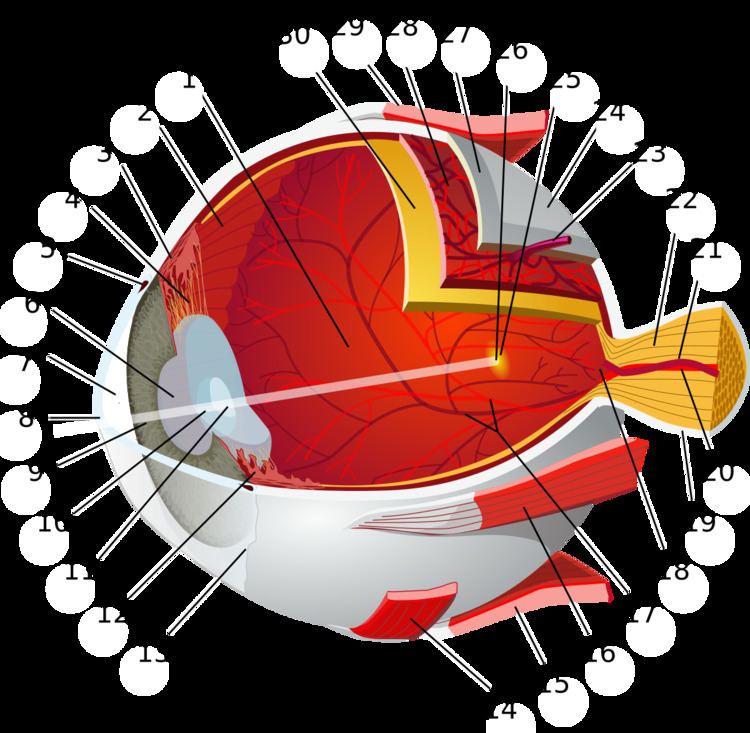Insertion encircles iris | ||
 | ||
The iris sphincter muscle (pupillary sphincter, pupillary constrictor, circular muscle of iris, circular fibers) is a muscle in the part of the eye called the iris. It encircles the pupil of the iris, appropriate to its function as a constrictor of the pupil.
Contents
Comparative Anatomy
It is found in vertebrates and some cephalopods.
General Structure
Initially, all the myocytes are of the smooth muscle type but, later in life, most cells are of the striated muscle type.
Its dimensions are about 0.75 mm wide by 0.15 mm thick.
Mode of Action
In humans, it functions to constrict the pupil in bright light (pupillary light reflex) or during accommodation.
Innervation
It is controlled by parasympathetic fibers that originate from the Edinger-Westphal nucleus, travel along the oculomotor nerve (CN III), synapse in the ciliary ganglion, and then enter the eye via the short ciliary nerves.. The short ciliary nerves then run forward and pierce the sclera at the back of the eye, traveling between the sclera and the choroid to innervate the iris sphincter muscle.
